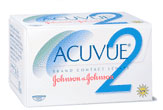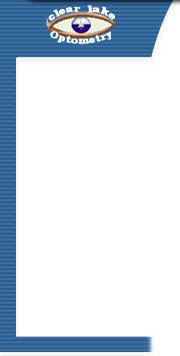| |
CONTACT LENS FEATURES & FACTS
- Feature: Visual Acuity
Fact:
Visual acuity is your ability to see objects clearly. With some soft contact
lenses your vision may be slightly "fuzzy" when you look at distant objects.
- Feature: Comfort
Fact:
Since comfort is a relative term meaning different things to different people.
it is difficult to explain in words. Ideally, comfortable contact lenses should have
minimal or no sensation to the wearer. This is a result of the type of material
from which lenses are made that enables them to stay soft. It also can be a result of the thinness
of the lens. Generally the thinner the lens, the more comfortable it is to wear.
- Feature: Resistance to Deposits
Fact:
Like a new windshield on a car, the surface of a new contact lens is clean and smooth.
Through use however, lenses may accumulate small microscopic particles that adhere to the
surface of the lens. Initially these deposits are removed by cleaning your lenses. Over
time, these deposits become more and more difficult to remove. When large amounts of
deposits accumulate, you may experience a reduction in comfort and visual acuity. This generally
requires that you replace your lenses. Some lenses have higher resistance to deposits than others
and, as a result, will provide you with comfort, and crisp, clear vision over a longer period of time.
- Feature: Handling
Fact:
Inserting and removing your lenses requires physically handling them.
Since soft lenses are pliable, they may tend to fold, adhere, or stick
to themselves, similar to the plastic wrap you use in your home. Soft
lenses can be difficult to handle. Some soft lens materials
hold their shape better than others. Depending on your particular visual
needs, you may find certain lenses easier to handle.
- Feature: Lens Life
Fact:
The life of your contact lens is the length of time you can successfully
wear it before it must be replaced. Lens life varies with different lenses.
Deposits, improper cleaning solutions can all shorten the life of your lenses.
- Feature: Wearing Flexibility
Fact:
There are two types of soft contact lenses: daily wear and extended wear.
Daily wear lenses must be removed, cleaned, and disinfected every day.
Extended wear lenses are designed to be worn overnight and, for some
patients, may be left in the eye for up to 30 days.
Most practitioners recommend that for the majority of extended wear patients,
lenses be worn on an "occasional overnight wear" basis. Some soft contact
lenses provide you with the choice of wearing them either as a daily wear lens or
an extended wear lens. If you have questions about which type of lens is best
for your eyes, please ask Dr. Anderson.
|
 Web site hosting
Copyright © Clear Lake Optometry.
Web site hosting
Copyright © Clear Lake Optometry. 









